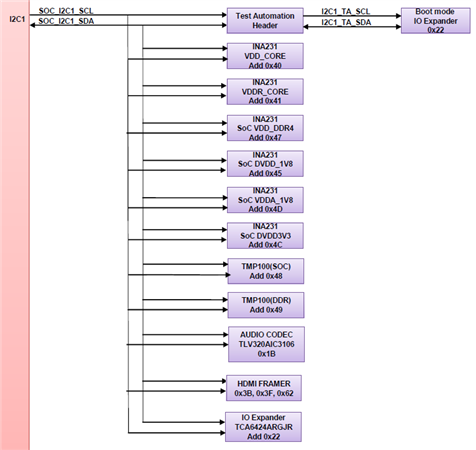Hi Team,
I am trying to communicate with I2C devices i.e., temperature sensors and LED Driver but when I run "I2Cdetect -l " I could not see both devices getting detected.


Could you please let me know what changes I need to do to access both devices.
I am using default image available in https://www.ti.com/tool/PROCESSOR-SDK-AM62X.
Regards,
Kumar Ashutosh



